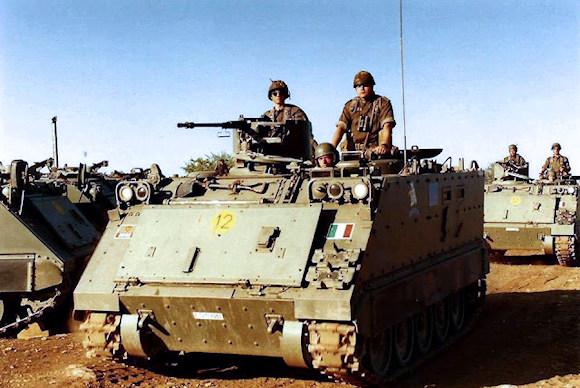We have reached the second episode of our captain's captivating story and, strictly speaking of Infantry, we recall what the perception was as soon as we entered the driveway of our recruit training battalion.
The official conscript students, "complement", the AUC (photo), were destined for the military schools, while the conscripts to the CAR, recruit training center, which later became BAR, recruit training battalion, and later RAV, volunteer training regiment.
We were very young, bewildered and even a little worried about having to face a reality with unknown customs and different clothes, another world that would probably be good for some troublemakers of today. Every warning, order or rule was shouted and the corporals, followed above all by the second lieutenants, were the ones who were the most popular.
Although shy, we tried to support each other by looking for common points to familiarize ourselves as soon as possible and build courage in the first week. After a few days of plainclothes marching, the dressing room and the tailor arrived who, with speed, skill and a piece of chalk, made our drop (ordinary service uniform).
Generally the composition of the span was eight bunk beds for 16 beds, plus a single one for the corporal. Time was marked for everything: the "cube" and a few minutes to the bathrooms and to change. And if you were a volunteer, like myself, the severity and rigor had tripled and the officers kept repeating to you: "We didn't call you, you wanted to come!".
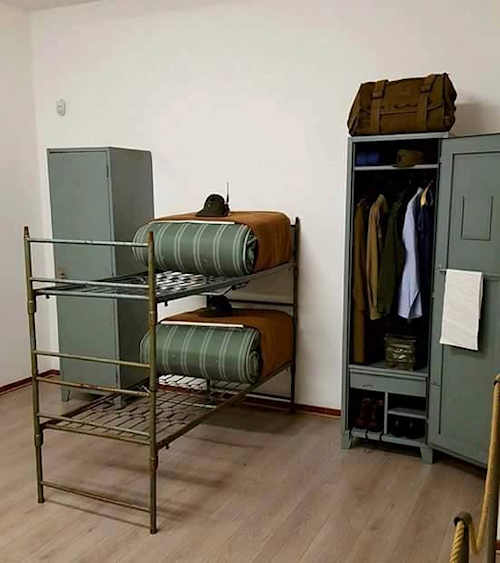 Who, in the long waits for training with the Garand M1, hasn't tried to cock the bolt? Too bad that most of the time, even if unloaded, the corporal had to intervene to lower the spring and close it, followed by the tear of the velcro as punishment ...
Who, in the long waits for training with the Garand M1, hasn't tried to cock the bolt? Too bad that most of the time, even if unloaded, the corporal had to intervene to lower the spring and close it, followed by the tear of the velcro as punishment ...
Do you remember the presentations? Recruit or VFP, surname and name, 2a company 3o platoon 4a COMMANDS team !!! In short, four weeks that changed you radically.
One thing struck me most of all: the mistake of one was the mistake of all, and everyone was wrong, so no form of bullying but only spirit of body. Hours and hours of marching and we were never perfect, if anything acceptable.
Sleep in the evening came immediately after the long waits at the shop in front of the few telephones present to talk to the family. The barracks signals heard in the films were real here and you understood even more that you were in another dimension.
Cold, rain or heat did not make a difference on the training program and, among the first delicate deliveries assigned, there was the room attendant or the armed guards on the roof terrace if we had already made the shots with the rifle.
Then the destinations and the assignment department, what a ferment ... But there everything was more bland and understanding, but we were still the latest arrivals. Here, having ascertained the importance of the Infantry Weapon, the story of our legendary captain, a company commander, can continue from here.
Do you want to know more about him? Well, today he is the owner of a prestigious diving school in Rome.
The day of an infantry captain in 1980 (second episode)
Three minutes. No signs of the enemy positions barely visible behind the low vegetation. A look at the radio players with the equipment in strict radio silence and at the graphic order of operations spread out on a tablet leaning against a bulkhead. The graph shows with conventional signs the enemy situation, the mission entrusted to the complex, the methods for its execution (starting bases, initial positions of the platoons, reference lines, maneuver times, attack directions), initial and subsequent deployment of the logistic rate and methods for restocking and clearing the injured. It had been set up in the night meeting with the commanders, crouched and cold under a camouflage sheet stretched between two VTCs.
Each had drawn his own copy, had asked for clarification and had in turn been questioned by the captain who wanted to verify his sure understanding. The pocket-sized card with the code words corresponding to a specific order was also distributed.
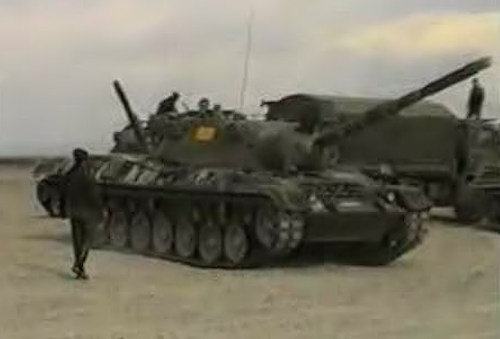 In the captain's head, along with the adrenaline, the excitement for the imminent attack and the pride of the Infantry officer, the basic weapon, are mixed, aware of being able to use the best and coordinate the forces available to carry out the assigned mission: three rifle platoons each with 4 VTCs, one anti-tank platoon with six SR M-40 A1 guns12 mounted on a reconnaissance car, a mortar platoon on three M106s, a section of 155 howitzers, the tank core with two Leopard-113 and a Biber wagon14, two G91Y fighters, a Medication post with ambulance, the logistic rate with the vehicles for the supply of ammunition, fuel and provisions. In total ten components.
In the captain's head, along with the adrenaline, the excitement for the imminent attack and the pride of the Infantry officer, the basic weapon, are mixed, aware of being able to use the best and coordinate the forces available to carry out the assigned mission: three rifle platoons each with 4 VTCs, one anti-tank platoon with six SR M-40 A1 guns12 mounted on a reconnaissance car, a mortar platoon on three M106s, a section of 155 howitzers, the tank core with two Leopard-113 and a Biber wagon14, two G91Y fighters, a Medication post with ambulance, the logistic rate with the vehicles for the supply of ammunition, fuel and provisions. In total ten components.
Two minutes. A look in agreement with the Lieutenant of Artillery in connection with the 155 howitzers section, deployed ten km to the southeast, in an area that he had crossed the previous day. He smiles remembering the meeting with the lieutenant colonel commander of the artillery group that supplies him with the howitzers section. He had obtained authorization from the superior command for an intervention order15 but he had also been warned that there was a shortage of ammunition from 155. He was in a damn hurry to reach the starting base for the attack the following morning but, after the presentation and the formal greeting, he had to submit to the doctrinal procedure of the understandings and agreements16.
He had convinced the lieutenant colonel that, given the poor protection of the BMP-1 (the armor, he recalled, reaches a maximum of 19 mm in the front of the hull and 23 mm in the turret) a timed shot, with the grenade bursting in the air , near the stations, it was certainly the best choice. Eventually he'd popped up an accompanying fire action, focusing on a circular type 3 lens17 of three shots per weapon, timed, with effective fire, without adjustment so as not to give the enemy time to seek cover.
At the time of saying goodbye, the group commander let slip a sharp but admired tease: "it's the first time I've found an infantryman who knows anything about artillery!". The captain had not replied.
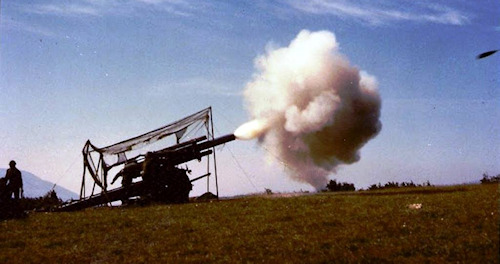
Knowledge of the possibilities, limits and capabilities of the departments he had to employ and, of course, of the enemy was a fundamental requirement for him, a point of honor. He knew that he would never be able to forgive himself for endangering the lives of his men due to a sin of ignorance.
The FAC makes the agreed gesture to indicate that the two G91Ys are orbiting at a distance that allows a TOT (Time On Target) of less than two minutes. The captain rethinks the counts to fill in the requests for fuel lubricants, combat rations and food for the whole complex of 249 men, 18 VTC and 15 various vehicles. He reflects on the calculations made to have the right quantities of ammunition for pistols, hand grenades, rifles, 7,62 and 12,7 machine guns, 106 rounds, mortar bombs, 105 rounds. Only the 155/23 section thought in right at the request for grenades.
A minute. Mentally review the code names of the tank nucleus that must attack the enemy on the left, crossing the wide ditch of the dry river and thus obtaining a small surprise effect, and of the rifle platoons that must begin the movement together with the CAS of the planes, as soon as finished the artillery fire.
Street! The captain takes the microphones of the radios and scans the code for the start of the attack. Howitzers open fire.
From the starting point, the 40 kg hiss of a 155 grenade in flight is heard about ten seconds before the sound of the cannon shot. After a few seconds you see the flash of the explosion on the target and immediately after comes the dark roar of the explosion.
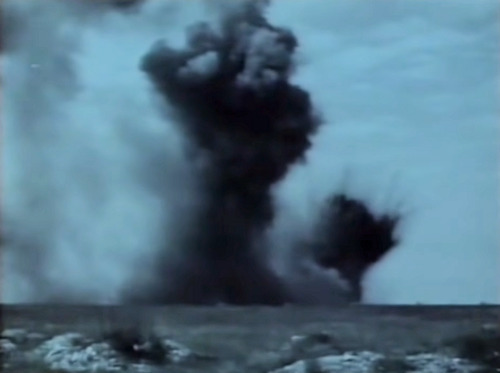 In three minutes the intervention of the howitzers ends. A nod to the FAC: after 90 seconds the pair of G91Ys suddenly appear and launch HEAT rockets on the T-72s. He gives coded orders via radio to platoon commanders and the tank team to start the engines. The order also applies to the VTC of the company's command post.
In three minutes the intervention of the howitzers ends. A nod to the FAC: after 90 seconds the pair of G91Ys suddenly appear and launch HEAT rockets on the T-72s. He gives coded orders via radio to platoon commanders and the tank team to start the engines. The order also applies to the VTC of the company's command post.
The engine starts with a hiss and the eight-cylinder of 7500 cubic cm makes the whole vehicle vibrate. The captain feels the vibrations increase along with the adrenaline.
Finish the CAS. Other codes via radio: order to pass the starting bases and order to the mortar platoon to start firing on the stronghold. Advanced platoons reach the white reference line 500 meters from enemy positions. The captain orders the mortars to stop firing.
The VTCs open fire with the 12,7 on board and stop 300 meters from the enemy, taking advantage of a small rise in the ground that they reach with the ramps down. The green reference line is reached. The fusiliers jump out of the means and throw themselves to the ground.
The 12,7 on board shift the shot on the BMP-1 to the background. On the left, the two Leopards opened fire on the BMP-1s and the T72s and protect the Biber which reaches the moat and launches the bridge.
The anti-tank platoon on the right is near the ford and has started firing against the BMP-1s and the more exposed T-72: you can hear the dry and deafening slaps of the 106 shots that start while a long blast escapes from the breech.
(Go on)
12 Without recoil. The 106 gun is generally mounted on light 4x4 vehicles and has a useful range of 1300 m.
13 Tank of 41 tons, with a crew of 4 men, armed with 105 mm cannon with rifled barrel and two 7,62 mm machine guns; one coaxial with the cannon and the other in the turret of the commander.
14 Mounted on a Leopard-1 hull, in about 4 minutes it launches a 4-meter wide class 50 deck that allows you to overcome a maximum span of 20 meters.
15 Direct order to the howitzers to open fire. The other methods are "prepared intervention" and "request for intervention".
16 In summary: the tactical link between the Commander of the Base Weapon and the Commander of the Artillery Group provides for the joint examination of the agreements (firing requirements based on the situation of the friendly and enemy forces and the possibilities of the artillery) and of the agreements (objectives known and presumed, interventions to be prepared, requests for fire).
17 For artillery fire, the targets on the ground are assimilated to geometric figures (point-like, circular, rectangular) followed by a number based on their size. The “circular type 3” has a diameter of 300 m.
The Infantry Weapon: the Queen of all battles - First episode: "the captain"
The Infantry Weapon: the Queen of all battles - Third episode: "the captain's day ends"
Photo: web

